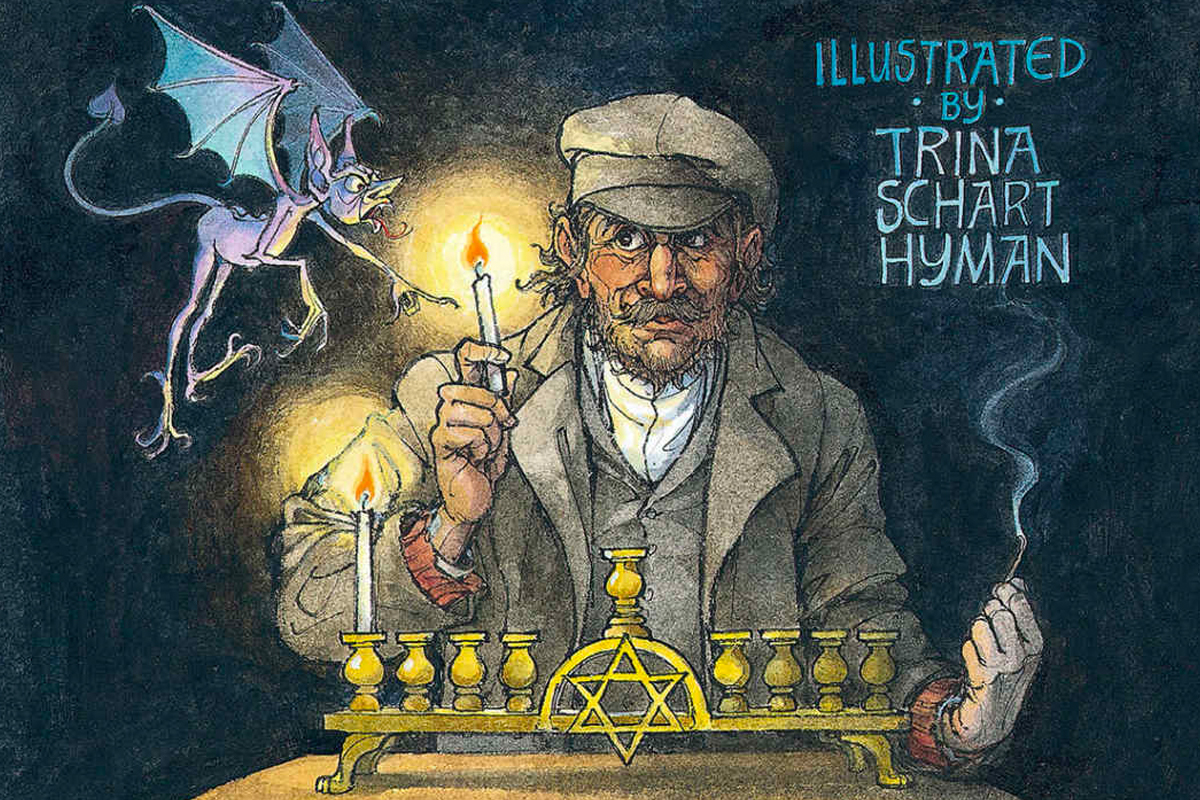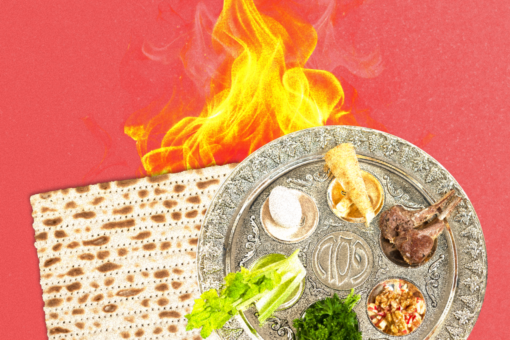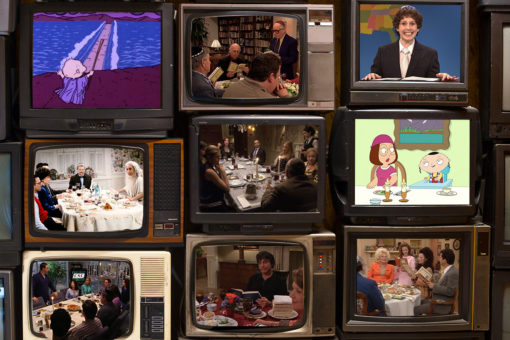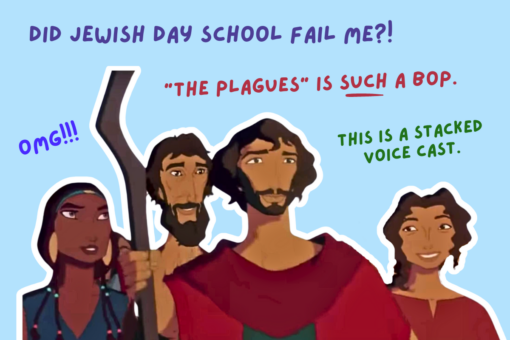It’s the most wonderful time of the year! You know what that means: time to binge watch awful holiday movies on Netflix, break out the Mariah Carey, and pay a visit to the tiny corner of Hanukkah decorations at your local CVS or Walgreens for some cheaply made gelt and chocolate Maccabees.
To deny how fun this time of year is in all its festive glory would be untruthful. Are we a little bored of non-Jews thinking Hanukkah is our most important holiday? For sure. Do I still get super excited when I see a sweater with a dreidel on it or a greeting card with a cheesy joke about latkes on the front? You bet your ass I do. But in all my holiday preparations, I could not help but think about how, aside from a few borderline offensive Christmas copycats (sorry, Hanukkah Harry is not a thing), we don’t really have a pop culture icon to represent our eight-day celebration other than the 2,000-year-old story of Hanukkah itself… or do we?
If you were born any time around or after 1989, chances are you used to read a story called Hershel and the Hanukkah Goblins, and you might still read it every year to this day. For those of you who aren’t familiar with the tale, or those of you who need a little refresher, Hershel and the Hanukkah Goblins, authored by Eric Kimmel, is an illustrated children’s book that follows the story of Hershel of Ostropol, a man who wanders into a sleepy village plagued by Hanukkah-hating goblins.
The townspeople explain to Hershel that they aren’t allowed to celebrate the festival of lights, as goblins who haunt the old synagogue come and blow out the candles on their menorahs, break their dreidels, and throw their latkes on the floor. In order to break the curse, Hershel must spend eight nights in the synagogue lighting the festival candles until he is able to convince the King of the Goblins to light the eighth and final candle himself.
Hershel meets a number of strange goblins, and one by one tricks them into leaving him alone to light the menorah and say the Hanukkah blessings by doing pretty normal things like, you know, threatening to crush one like a hard-boiled egg, getting another one’s hand stuck in a pickle jar, and kicking ass at dreidel. Finally (spoiler alert!), Hershel meets the King of the Goblins and is able to trick him into lighting the menorah, ending the curse and saving Hanukkah for all.
This, my friends, is our Hanukkah pop-culture icon. Judaism’s very own A Christmas Carol, if you will. While not entirely necessary to make comparisons, stick with me here. Like A Christmas Carol, which is arguably the most well known, re-adapted, secularized, and spooky (?) Christmas story, Hershel and the Hanukkah Goblins has become a holiday staple not only because it creates a compelling story that mimics the historical tale, but largely because it brings fun and magic to the season outside of the holiday’s original traditions. Thirty years later, the story has quite literally become a classic, a household name, and has even been adapted into plays and musicals — coming to a JCC near you (as soon as it’s safe to gather for theater again).
So if Hershel and the Hanukkah Goblins is akin to what others have with The Christmas Carol, does that make Hershel our Scrooge? Maybe so, but Hershel is way more of an icon. Unlike Scrooge, Hershel already understands the importance of the holiday and risks his life to protect it. Also, Hershel was also a real person.
Before becoming the folk hero of countless stories and poems, Hershel of Ostropol was a shohet (kosher butcher) in the 18th and 19th century who also happened to be a trickster with quite the reputation. With particular animosity towards the ruling class, Hershel would make jokes that eventually got him banished from his town, forcing him to become a wanderer — which we can only assume is what led him to happen upon the little village plagued by Hanukkah-hating goblins in the first place.
As for the concept of Hanukkah goblins, well, it’s unclear where that lore comes from. We already know that, although unrelated to Hanukkah, there are plenty of goblins and ghouls in the Torah. Even the concept of demons sitting on the right and left side of every person’s shoulder seems to come from the Talmud. While there may be no explicit mention of goblins, the sheer concept of the Ibbur from Kabbalah, souls who come to people in dreams or haunt specific places, allow for the lore of Hershel and the Hanukkah Goblins, and magically spooky Hanukkah stories in general, to take place.
Simply look to some even more niche Hanukkah stories (if there’s such a thing as one children’s Hanukkah book being more niche than another) for further proof of this phenomenon. Moishe’s Miracle, a Hanukkah-adjacent story about a milkman, features a talking cow, a magic frying pan, ghostly dreams (al la Fruma Sarah), and tiny demons that terrorize Moishe and his wife. Bubbie and Zadie Come to My House, another lesser-known Hanukkah tale, depicts a transient old couple somewhere between ghosts and fairies that visit children on the first night of Hanukkah and partake in holiday festivities. Hershel and the Hanukkah Goblins, as well as these other Jewish fan favorites, quite literally sprinkle a bit of our own magic into a month saturated with elves and flying reindeer.
So this year, when you’re gearing up for your Hanukkah family reunion on Zoom and trying to figure out whether or not to make your own sufganiyot or have them delivered straight to your door, pay a visit to your old friend Hershel. With all due respect to those who say “bah humbug,” Hershel and his goblins deserve nothing less!



